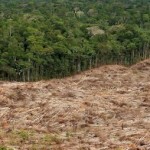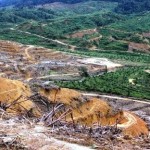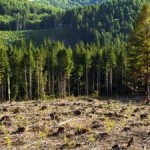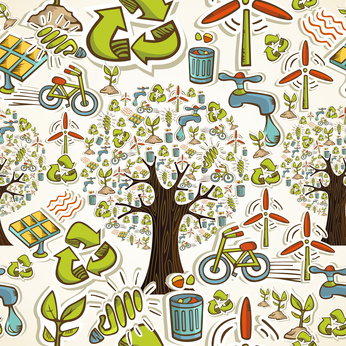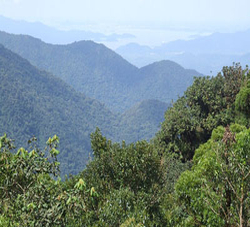 Nairobi – Global environmental crime, worth upto US $ 213 billion each year, is helping finance criminal, militia and terrorist groups and threatening the security and sustainable development of many nations, according to a new report from the United Nations Environment Programme (UNEP) and INTERPOL.
Nairobi – Global environmental crime, worth upto US $ 213 billion each year, is helping finance criminal, militia and terrorist groups and threatening the security and sustainable development of many nations, according to a new report from the United Nations Environment Programme (UNEP) and INTERPOL.
“The Environmental Crime Crisis”, a rapid response assessment, was released during the first United Nations Environment Assembly (UNEA), where action to tackle environmental crime is high on the agenda for hundreds of environment ministers, law enforcement officers, the judiciary and senior UN officials.
One terrorist group operating in East Africa is estimated to make between US $ 38 and US $ 56 million per year from the illegal trade in charcoal, says the report. In total, militia and terrorist groups in and around African nations with on-going conflicts may earn US $ 111 to US $ 289 million annually from their involvement in, and taxing of, the illegal or unregulated charcoal trade.
Other groups that benefit from the illegal trade in wildlife and timber products are also estimated to earn between US $ 4 and US $ 12.2 million each year from elephant ivory in the Central Africa sub-region, driving a significant reduction in elephant populations across Africa, the report says.
 Combined estimates from the Organisation for Economic Co-operation and Development (OECD), the United Nations Office on Drugs and Crime (UNODC), UNEP and INTERPOL place the monetary value of all environmental crime – which includes logging, poaching and trafficking of a wide range of animals, illegal fisheries, illegal mining and dumping of toxic waste – at between US $ 70 and US $ 213 billion each year. This compares to global Overseas Development Assistance of around US $ 135 billion.
Combined estimates from the Organisation for Economic Co-operation and Development (OECD), the United Nations Office on Drugs and Crime (UNODC), UNEP and INTERPOL place the monetary value of all environmental crime – which includes logging, poaching and trafficking of a wide range of animals, illegal fisheries, illegal mining and dumping of toxic waste – at between US $ 70 and US $ 213 billion each year. This compares to global Overseas Development Assistance of around US $ 135 billion.
The report points to an increased awareness of, and response to, the growing global threat, but calls for further concerted action and issues recommendations aimed at strengthening action against the organized criminal networks profiting from the trade.
“Beyond immediate environmental impacts, the illegal trade in natural resources is depriving developing economies of billions of dollars in lost revenues just to fill the pockets of criminals,” said UN Under-Secretary-General and UNEP Executive Director Achim Steiner. “Sustainable development, livelihoods, good governance and the rule of law are all being threatened, as significant sums of money are flowing to militias and terrorist groups.”
“This assessment reveals that, while there is growing awareness, the responses to date in terms of impact have not been commensurate with the scale and growth of the threat to wildlife and the environment. The scale of wildlife and forest crime in threat finance calls for much wider interventions and policy action,” he said.
“Building on the initiatives that took place this past year – from the CITES COP in Bangkok to the Botswana Elephant Summit and the French Government-hosted Summit for Peace and Security in Africa, to the UN Security Council resolutions (21/34 and 21/36) and the destruction of numerous stock piles of ivory around the world – it is imperative that 2014 becomes a year of concrete and decisive action,” he added.
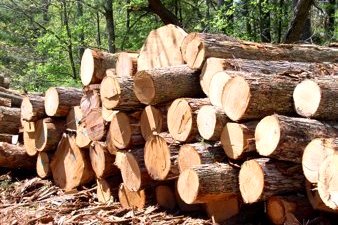 Illegal Logging and Forest Crime
Illegal Logging and Forest Crime
Illegal logging and forest crime has an estimated worth of US $ 30 to US $ 100 billion annually, or 10 to 30 per cent of the total global timber trade. An estimated 50 to 90 per cent of the wood in some individual tropical countries is suspected to come from illegal sources or has been logged illegally.
For pulp and paper production, networks of shell companies and plantations are used to funnel illegal timber through plantations, or to ship wood and pulp via legal plantations. These methods effectively bypass many current customs efforts to restrict the import of illegal tropical wood to the US and to the EU.
Based on data from EUROSTAT, the Food and Agriculture Organization of the United Nations (FAO) and the International Tropical Timber Organization (ITTO), the EU and the US annually import approximately 33.5 million tons of tropical wood in all its forms. It is estimated that 62 to 86 per cent of all suspected illegal tropical wood entering the EU and US arrives in the form of paper, pulp or wood chips.
In Africa, 90 per cent of wood consumed is used for woodfuel and charcoal, with an official charcoal production of 30.6 million tonnes in 2012, worth approximately US $ 9.2 to US $ 24.5 billion annually. The unregulated charcoal trade alone involves an annual revenue loss of at least US $ 1.9 billion to African countries.


